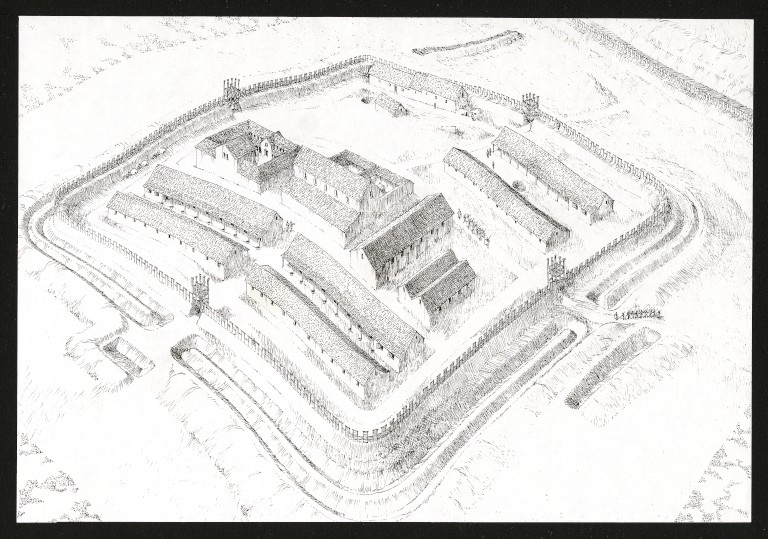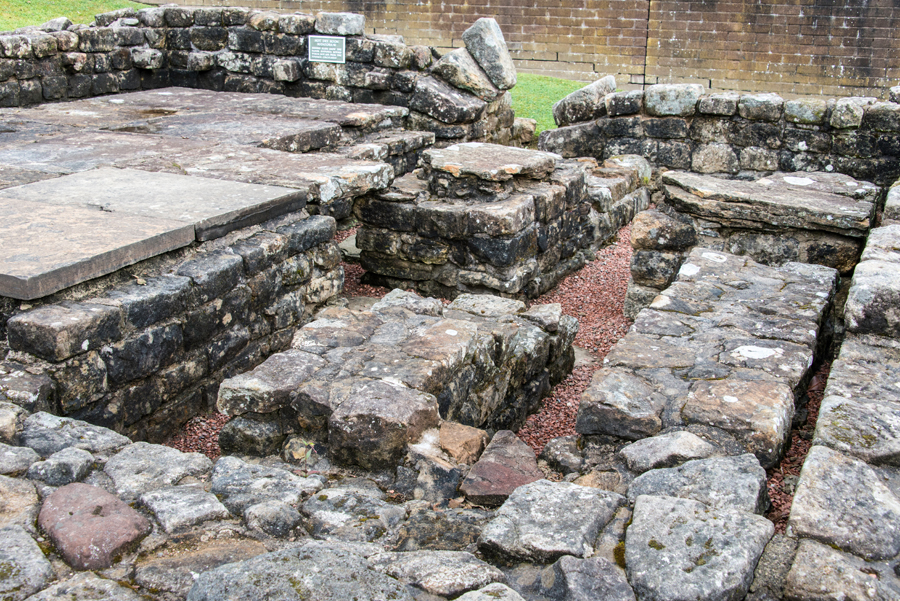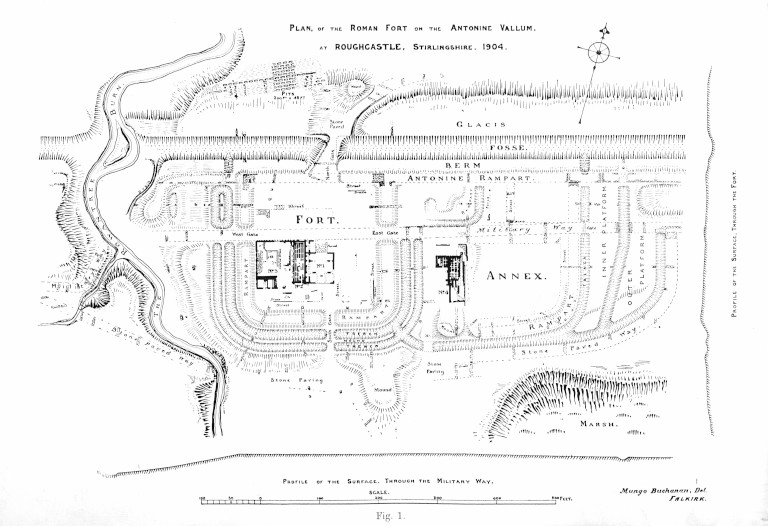Seventeen forts were eventually built at regular intervals along the Wall, a dramatic increase from the original plan of just six. Between them they accommodated the 6,000-7,000 men stationed on the Wall. In comparison to other forts throughout Britain and the empire, including those on Hadrian’s Wall to the south, the Antonine Wall forts are, on average, smaller than the norm. All followed the basic Roman design: the classic ‘playing-card’ shape of a rectangle with rounded corners.

The forts themselves were, like the rampart, primarily constructed of turf, with stone or timber internal buildings, and all but one, Bar Hill, were physically attached to the rampart. Within a courtyard surrounded by a protective stone or turf wall, the fort was laid out to a T-shaped interior plan. This was formed by the presence of a major road (the via principalis) running from gate to gate along the long side of the fort, and secondary roads (the via praetoria and via decumana) running to the front and rear gates respectively.
In the centre of the fort was the headquarters building (the principia). Close to it lay the house of the commanding officer and his family (the praetorium), and the granary, large enough to hold a range of food supplies for a year. These buildings were often built of local sandstone if available, and roofed with red tiles. The ordinary soldiers slept in timber barrack blocks, where they cooked their own food, and officers had their own rooms at one end of the block. Even the smallest fort had its own bath-house, with a steam room and sauna, and a communal toilet with space for nine men at a time. Impressive remains survive at Bearsden, where you can see part of the hypocaust, the underfloor heating system.

Attached to the forts, were annexes. These defended enclosures provided additional space for storage, workshops, and stables and often the bath-houses. In a few locations, there is also evidence for a civilian settlement known as the vicus, which grew up organically outside the fort.
The best places to see the remains of forts and bathhouses today are Rough Castle, Bar Hill and Bearsden.







